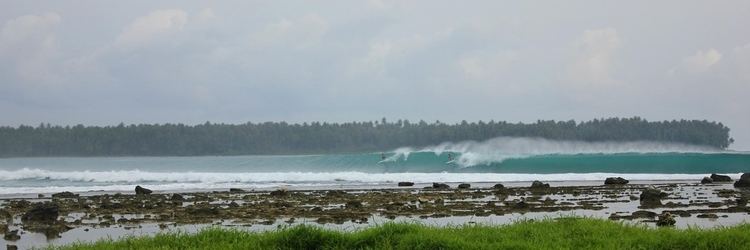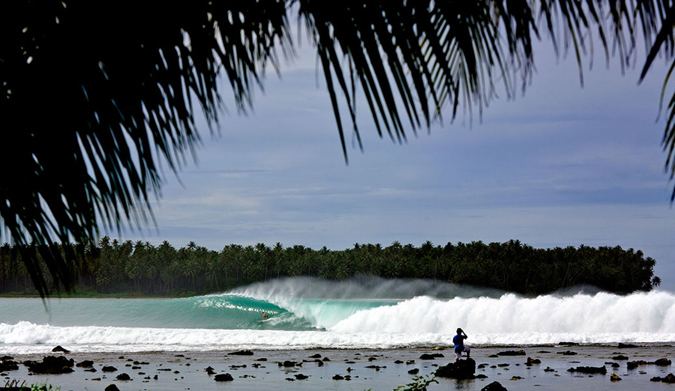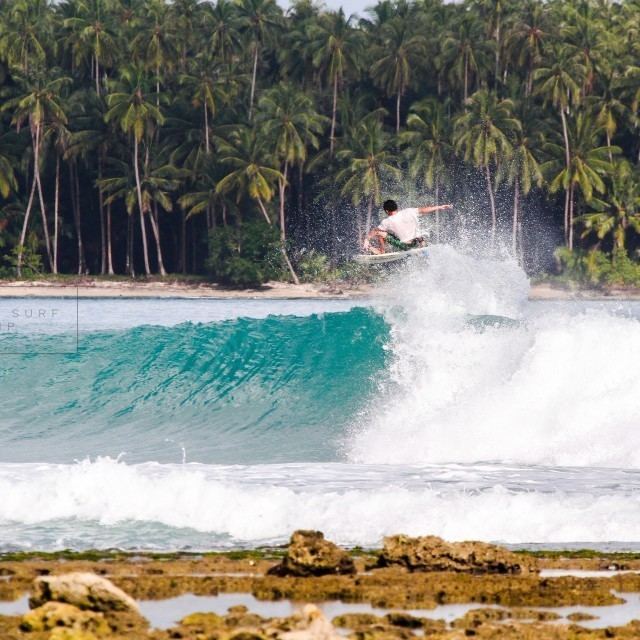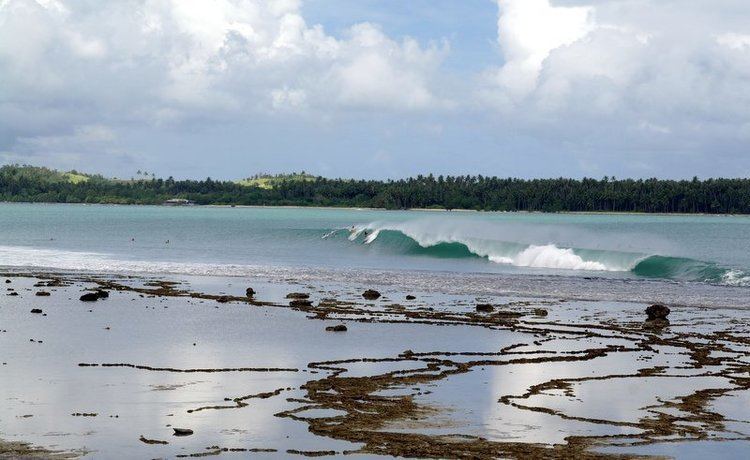 | ||
Eat sleep surf finding lagundri bay nias island sumatra
Lagundri Bay is a horseshoe shaped bay at the southern end of the island of Nias off the coast of Sumatra in Indonesia. It is a popular tourist destination and a noted surf break.
Contents
- Eat sleep surf finding lagundri bay nias island sumatra
- Hey ho lagundri bay 2015
- Lagundri Bay surf break
- Start as surf location
- 2005 NiasSimeulue earthquake
- Characteristics
- Other Nias Island surf breaks
- References

Hey ho lagundri bay 2015
Lagundri Bay surf break

The main break in Lagundri Bay, often also called "The Point," "Soraki Point," or simply "Nias," is a barrelling right-hander breaking over reef along the western side of the bay. The correct name of the point where the wave breaks is "Soraki" (which apparently means "many reefs").A break further out along the bay is called Indicators, which breaks dangerously onto dry reef and is surfed only on rare occasions.

On the opposite side of the bay, a left-hander called The Machine breaks sometimes, but needs a very high tide and large swells. "Kiddies Corner" is the name of the inside section of the wave at "the Point." All the waves have been affected by recent uplift from the 2005 Nias–Simeulue earthquake.
Start as surf location

The surf break was discovered in 1975 by travelling Australian surfers Kevin Lovett and John Giesel. Accompanying them to the bay on 18 June 1975 when they first surfed it were Peter Troy and Wendy Adcock of Australia, New Zealander Michael Day and Australian Patrick Waite. Lovett and Giesel, aged 20 and 22, were travelling through south-east Asia, living rough and pursuing the surfer's dream of perfect uncrowded waves. They were drawn to Nias by a map they saw in a chieftain's house in North Sumatra. On their final sea leg to the island they found legendary surf traveller Peter Troy and his partner Wendy Adcock. Michael Day, 25, a former surfer, and Patrick Waite were travelling in Indonesia and just happened to arrive at the time of the discovery.

On the island and after traveling 15 km through jungle they finally reached the bay and were greeted by, as Lovett put it, "Relentless sets of smokin' 6-to-8 foot almond-eyed waves". (That's 6 to 8 Hawaiian scale.) Those who surfed it for the first time were Kevin Lovett, John Giesel and Peter Troy. Michael Day, who swam in the break, could speak Indonesian and, at the request of Lovett and Giesel, asked a local to build a shack for them, and he agreed. That was the beginning of the surf village now there. Lovett and Giesel lived there for 3 months surfing it alone.

Giesel and Lovett, and the others who were with them at the time of the discovery, made a pact to keep the place secret, but word leaked out over the years. Giesel never got to enjoy Lagundri again, he suffered repeated bouts of malaria he'd contracted on their travels and died of pneumonia just 7 months later. Lovett maintained his connection with the place, returning many times and getting involved with helping the local people. In around 1995 he learnt from the local siulu (chief and head magician) that the two had actually been in considerable danger from headhunting, which still went on back in 1975.
New Yorker writer William Finnegan surfed Nias in 1979 and wrote about it in his 2015 memoir Barbarian Days.
2005 Nias–Simeulue earthquake

The 2005 Nias–Simeulue earthquake (28 May 2005) devastated the local village, and caused an uplift up to several metres over much of the island, with some eastern parts of island also reported to have sunk several feet or more in places. A number of structures both within the local village and throughout the island were toppled (with reportedly several thousand deaths, particularly in the north of the island), and a small tsunami also occurred, apparently up to the height of door frames on the first floor at Lagundri Bay, which also caused damage to houses and hotels within the bay.
Locals report that the tsunami arrived about 15–20 minutes after the earthquake. A number of people in the local village lost their goods and livelihoods from this earthquake and tsunami. The uplift seems to have been part of a regular cycle of megathrusts followed by gradual sinking. On this occasion the uplift was about 2 feet within the Bay itself, and it has actually improved the main surf break, but reduced the quality of the others.
Where previously The Point only broke from about 4 foot and up (Hawaiian scale) it now breaks from 2 foot and the main section of the tube has lengthened from 7 seconds to perhaps 9 in good conditions, with a second tube section a little further down from the main part of the wave on occasions. On the other side of the bay however The Machine has suffered, needing an even more fickle combination of large swell and higher tides to be surfable.
Characteristics
The wave characteristics of "the Point" have long been considered world-class, and include: a remarkably easy paddle out; a machine-like, jacking, perfect almond-shaped tube (particularly when >4 feet) and which has reportedly held waves up to 15 feet (Hawaiian scale-that's ~30 feet wave faces) since the earthquake; and a sculptured wave face which is partially smoothed out by a weak 'reverse current'- which sucks water from the bay into the wave and acts to 'smooths out' the breaking wave face, even under light onshore wind conditions.
The wave jacks and pitches quickly out of relatively deep water, and has surprising energy and roundness over about 4 feet (Hawaiian scale), particularly since the earthquake, also breaking in relatively deep water (at least for the roundness of the barrel) on all tides. The world-class section of the wave only breaks for about 60-80m, before it dies out in deeper water, afterwards forming a slow moving, low-quality wave which breaks for around another 100m or so ("Kiddies Corner").
The water within the surrounding bay has a sharp and remarkably deep drop-off, and it is likely the peculiar, long and narrow U-shape of the bay acts to focus the incoming swell energy onto the main part of the point, to produce both the weak 'reverse current', and the consistently almond-shaped tubes.
Other Nias Island surf breaks
There are other waves both to the west and east of Lagundri Bay, which have been variably affected by uplift from the earthquake. A medium quality left-hander breaks about 2 hours walk west from the main point, called locally "the Shark Hole," and another very dubious right-hander breaks about 15 minutes walk to the west of the main point. There are waves to the north along the west coast of Nias island, one of which, "Afulu," has apparently been severely affected and reduced in quality by recent uplift.
